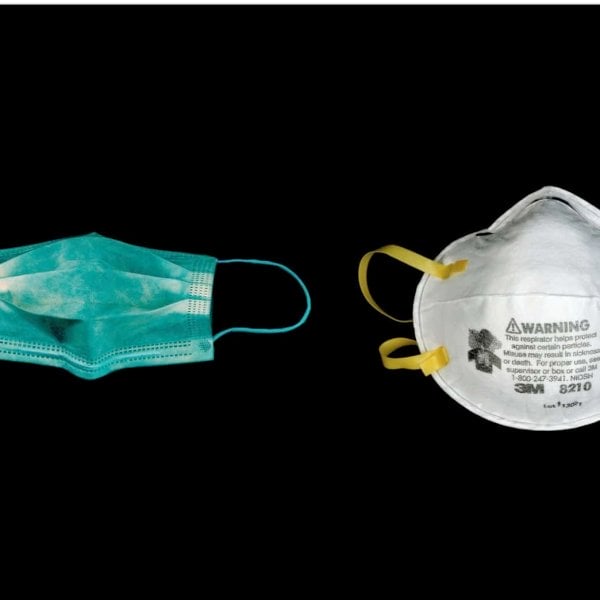Why the DOH-reported numbers may be a lot lower than the true number of actual infections.
by Danny Otanes (Sulit Reader)
On May 30, two days before the transition of Metro Manila from a Modified Enhanced Community Quarantine (MECQ) status to the less stringent General Community Quarantine (GCQ) status, the Department of Health (DOH) released an update to its Covid-19 infection and fatality dashboard. According to the update, the number of confirmed Covid-19 cases had increased to 17,222 from 15,588 just two days before while deaths had risen to 950 from 921 during the same timeframe.
As if on cue, social media erupted with rants expressing both fear of what will happen when the transition to GCQ is finally implemented, and disgust at the apparent failure of the government to suppress the growth of infections. The DOH, meanwhile, immediately issued a clarification that of the new cases, only 252 where “fresh cases” while the remainder were due to the clearing up of a backlog in testing.

Filipinos have become “curve conscious” ever since the much publicized flatten the curve mantra became a global public health strategy more than two months ago so it’s quite understandable that many people become anxious when they see that the number of confirmed cases keeps going up. What many, however, do not realize is that the number of confirmed cases reported in the DOH Covid-19 tracker is but the venerable tip of the iceberg and that the true number of infected persons is higher.
Much higher.
First, a look at the numbers.
According to the May 30 Covid-19 tracker there were 17,222 confirmed cases and of these, 950 had died. This suggests a Case Fatality Rate (CFR) of 5.52%. In epidemiology, the CFR is defined as the proportion of people who die from a specified disease among all individuals diagnosed with the disease over a certain period of time. Equipped with this number as well as the most recent number of deaths, and assuming both were accurate, anyone can work backwards to determine the number of confirmed cases. For example, given a CFR of 10% and 2,000 deaths, the implied confirmed case count is 20,000 confirmed cases (2,000 / 10%). It’s important to understand though that because the number of deaths is normally recorded as a running total from the start of the pandemic, that 20,000 number would include active and recovered cases and of course those who have died.
The CFR is easy to calculate but not very useful.
While CFR is easy to calculate because most Covid-19 dashboards maintained by countries around the world are presented in terms of confirmed cases, it’s not a very good tool for understanding the extent of infections in a population especially in the early stages of a pandemic primarily because the number is highly dependent on the rate and criteria for testing. A country that conducts more tests across a wider group of people would have a more representative CFR compared to a country that tests less across a narrower group.
It’s a well known fact that different countries have different testing capabilities and testing philosophy. Iceland, for example, has tested more than 13% of its 360,000 population while testing people rather indiscriminately. Sweden meanwhile has mostly tested people in need of hospitalization and those working in healthcare and elderly care. While it has tested 160,000 more people than Iceland, the total constitutes only 2% of its 10.23 million population. What this means is that Iceland’s confirmed cases includes a higher number of mild and asymptomatic cases while Sweden’s figure is made up mostly of severe and critical cases and would therefore be associated with a higher death rate. While it is highly likely that there could be other factors in play, it is still worth pointing out that while both countries did not implement a total lockdown of their respective economies, Iceland’s CFR stood at 0.55% while that of Sweden was at 11.84% as of May 31, 2020.
Due to a lack of testing capacity, the Philippines has put in place a set of highly focused testing protocols. According to the DOH’s Revised Interim Guidelines on Expanded Testing for Covid-19 the goal of the strategy is to test all individuals who are at risk of contracting Covid-19. While technically anyone who has not yet gotten sick of Covid19 are at risk from Covid-19 because there is currently no vaccine, who the DOH considers as at-risk individuals are 1.) suspect cases 2. individuals with relevant history of travel and exposure (or contact) whether symptomatic or asymptomatic, and 3. healthcare workers with possible exposure, whether with symptoms or not. In practice, what this really means is that only individuals who have severe or critical symptoms or those individuals with mild symptoms but are considered as vulnerable are tested and that the 5.52% CFR would most likely not include the majority of asymptomatic and mild cases in the country.
Enter the IFR.
A much more useful metric can be used to determine the true deadliness of a disease and guide policy direction — the IFR.
The Infection Fatality Rate (IFR) is the ratio of deaths divided by the number of actual infections with SARS-CoV2. The main difference between the IFR and the CFR is in the denominator. In contrast to the CFR, the denominator of the IFR not only includes those who officially tested positive for the virus as determined by an RT-PCR or Rapid Test but also those who have not been tested for any number of reasons such as those excluded from a country’s testing protocols, those who have mild cases, are asymptomatic, or do not belong to any vulnerable group.
In most cases, the IFR would be a lower number than the CFR. In the case of the Diamond Princess cruise ship, for example, researchers estimated that the ship’s CFR was 2.6% with an IFR of 1.3%.
The main problem with the IFR though is the difficulty in estimating it. If enough capacity and resources were available, researchers can test everyone within a population and get a much truer (remember, tests are not 100% accurate) picture of the infection rate. This is what was done with the Diamond Princess’ roughly 3,700 passengers and crew. This can be realistically done when dealing with a reasonable population size like that of a cruise ship but when you try to apply that to a country with even several million people you run into the realities of resource and capacity constraints. The DOH initially set a testing capacity target of 30,000 tests per day by the end of May and while it officially reached the target in terms of theoretical capacity, it has failed to actually conduct as many tests that its capacity allowed.
Meanwhile, serological surveys are widely accepted as a way to determine a population’s true infection rate. In a serology test (sometimes referred to as an antibody test), researchers analyze a person’s blood to look for antibodies to a virus such as SARS CoV2. Instead of trying to determine if a person is currently infected with the virus, researchers want to find out if a person had been infected at any point in the past. This approach is better suited for identifying asymptomatic and mild cases once they have recovered. Serology tests are cheaper and less complex than the Reverse Transcriptase Polymerase Chain Reaction (RT-PCR) tests that are considered the gold standard for SARS -CoV2 infection detection. The rapid antibody test kits that Project Ark uses to screen employees are much more suited for serological testing rather than for identifying current infections.
Although serological tests are less costly and easier to administer than RT-PCR tests, conducting a proper serological survey would still require significant resources especially for large populations. While it’s better to conduct separate serological surveys for each country, it’s also possible to look at another country’s serological survey and use that as a baseline for a quick and dirty estimate (emphasis on quick and dirty) of another country’s own infection rate.
The Heinsberg Study.
In the first week of April 2020, researchers from the University of Bonn in Germany set out to determine the true IFR of Covid-19 by conducting a sero-epidemiological study of a small town in Germany called Gangelt in the county of Heinsberg which is located in the German state of North Rhine-Westphalia. Gangelt, with a population of 12,597 people, was one of the first towns in Germany to see the spread of SARS-CoV2 and it is widely believed that the outbreak came about due to crowds generated by a traditional carnival celebration.

Map source: https://www.citypopulation.de
Led by Prof. Dr. Hendrik Streeck, Head of the Institute of Virology at the University Hospital Bonn, the team, after ensuring that proper randomization in the sample selection had been observed, collected both blood samples and throat swabs from 919 individuals from 405 households. The blood samples were used to detect antibodies to SARS-CoV2 while the throat swabs were used to detect active infections through PCR. The use of both antibody and PCR tests at the same time is believed to provide a more comprehensive result than similar studies that only used antibody tests such as the one conducted by Stanford University in Santa Clara County in California.
The results of the study suggested that up to 1,956 people or 15.53% of Gangelt’s population had been infected with SARS-CoV2. This is more than five times higher than the officially confirmed case count of 388 that prevailed at the time of the study. Since there had been seven fatalities at the time, the results suggest that Gangelt had a CFR of 1.8% but a much lower IFR of 0.36%.
In a subsequent interview conducted by a British news website, Dr. Streeck stressed that the true IFR can only be determined after the pandemic but nevertheless said that while the 15.53% infection estimate is only relevant for the town of Gangelt, the 0.36% estimated IFR is a measure of the virus and can still be used as an input to pandemic models seeking to estimate the true number of infections. He extrapolated the estimated IFR to the whole of Germany and said “For Germany we have around 6,000 deaths. If we assume that the 6,000 people who died are the 0.37% [sic] Germany would have 1.8 million people infected right now.” At the time of the study, Germany only had a little over 100,000 confirmed cases of Covid-19.
So how does this relate to the infection rate in the Philippines?
Using the estimated IFR of 0.36% and applying that to the 950 fatalities in the DOH Covid-19 tracker as of May 30 we arrive at an estimated infection count of 263,889 (950 fatalities divided by 0.0036 IFR). This number represents everyone who has ever gotten infected with SARS-CoV2 whether that person knew about it or not (i.e. asymptomatic infections). This number is more than 15 times the official DOH case count during the same time period and illustrates the potential wide disparity that may exist between confirmed cases resulting from limited RT-PCR testing and the true infection prevailing in the country
Now for the really bad news.
Or good news depending on which side of the herd immunity argument you belong to.
Available data increasingly point out that fatalities from Covid-19 are highly dependent on age and the presence of other health conditions. Is it possible that the fatality rate in Gangelt was somehow influenced by the age demographics of the town?
Co-morbidity data is difficult to get but age-related information is widely available. The proportion of people aged 65 years old or older in Gangelt was estimated at 19.5% (versus 21% for Germany) in 2018. In contrast, data from the World Bank suggests that for the Philippines, the share of the same age demographic group in relation to the total population was only 5% in 2018.
Given this almost four-fold disparity in age demographics, would it be reasonable to assume that, all things being equal, less people would have died in Gangelt if it had a much younger population like that of the Philippines? If so then the resulting IFR would be lower than 0.36%. For example, if five people had died instead of seven, the estimated IFR would be 0.26% and if we apply this revised IFR to the 950 Philippine fatalities then the revised infection estimate would be closer to 360,000 people.
For sure, the above scenario makes liberal use of IFR data believed to be applicable for Germany but not necessarily for the Philippines, and may be closer to a pre-factual thought experiment rather than a proper extrapolation of data. It may take years — if at all — for researchers to fully understand the true IFR of Covid-19, as well as understand the different factors that cause IFR differences among countries. We must, however, be open to the possibility that the prevalance of the virus in the Philippines is much wider than what is officially declared. We must also realize that a higher infection rate doesn’t really mean doom. In fact, a higher number of infected while keeping deaths the same results in a lower IFR and means that the virus is less, not more, deadly. Finally, we should be careful that we do not over react to sudden spikes in the number of confirmed cases because not only are the numbers subject to report timing issues, rash decisions such as reimposing lockdowns all over the country at the first sign of infection increase may result in worse consequences for the country.







































